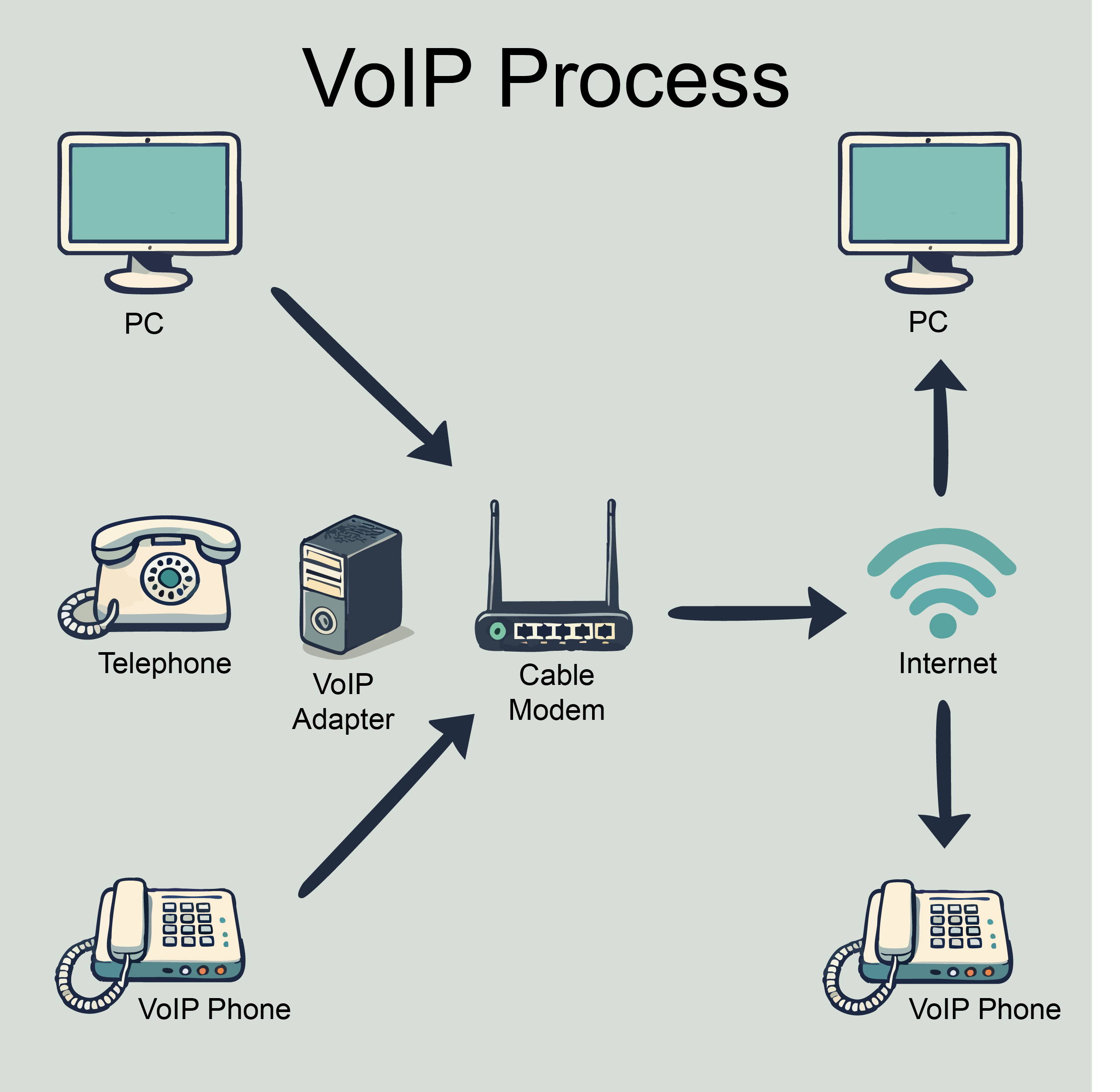Check out our White Paper Series!
A complete library of helpful advice and survival guides for every aspect of system monitoring and control.
1-800-693-0351
Have a specific question? Ask our team of expert engineers and get a specific answer!
Sign up for the next DPS Factory Training!

Whether you're new to our equipment or you've used it for years, DPS factory training is the best way to get more from your monitoring.
Reserve Your Seat TodayVoIP (Voice over IP), as the name implies, refers to the transmission of voice communications over IP networks. The term "VoIP" is widely used in both consumer and business markets.
For consumers, VoIP usually describes telephone service designed to replace traditional POTS (Plain Old Telephone Service). The major appeal of this new type of phone service is lower costs, both nationally and worldwide. The savings from routing traffic over the public internet is passed on to the subscribing consumers.
In business, Voice Over IP covers a much wider range of topics. One large focus is on the network equipment and infrastructure required to offer VoIP services to customers. You will also find frequent references to internal VoIP equipment in telecom environments. This equipment allows technicians and other employees communicate inexpensively over the company's existing bandwidth.
Sometimes, VoIP equipment is bundled with other network management devices in a single rack-mounted case. One example of this is the Voice Over IP RTU (Remote Telemetry Unit), which incorporates remote site monitoring with VoIP functionality.
When no one is present at a remote telecom site (which is most of the time), the RTU functionality provides a means of remotely monitoring and controlling equipment status from a central office. When a technician is on site for either planned or unplanned maintenance, the VoIP functionality (usually a simple handset plugged into the unit) allows that technician to communicate with other employees at other locations. This is especially useful when cell phone reception is poor in a very remote area.

As organizations increasingly adopt VoIP solutions for their communication needs, maintaining reliable performance is critical. Beyond the convenience and cost savings, the risk of service interruptions due to infrastructure issues remains a key challenge for businesses. This is where integrating remote monitoring and redundancy into your VoIP infrastructure becomes essential.
By incorporating remote monitoring systems like the DPS Telecom NetGuardian series into your VoIP setup, you gain real-time visibility into your network's health. These devices can track parameters like bandwidth usage, latency, and call quality while providing immediate alerts for issues such as failed connections or degraded voice quality.
Key benefits of remote monitoring include:
For example, the NetGuardian G6 832A not only monitors network alarms but also supports SNMP protocols for easy integration with VoIP systems.
Even with proactive monitoring, redundancy is critical to achieving 100% uptime in VoIP communications. Here's how to design a resilient setup:
To simplify the management of these systems, platforms like T/Mon can consolidate alarms from all VoIP components, providing a single-pane-of-glass view. With advanced features such as protocol mediation and centralized alarm handling, T/Mon ensures your team can focus on resolving issues instead of juggling multiple systems.
Combining VoIP with deoendable monitoring and redundancy ensures not just operational efficiency but also a better user experience. Employees and clients alike benefit from uninterrupted communication, which directly translates to improved productivity and customer satisfaction.